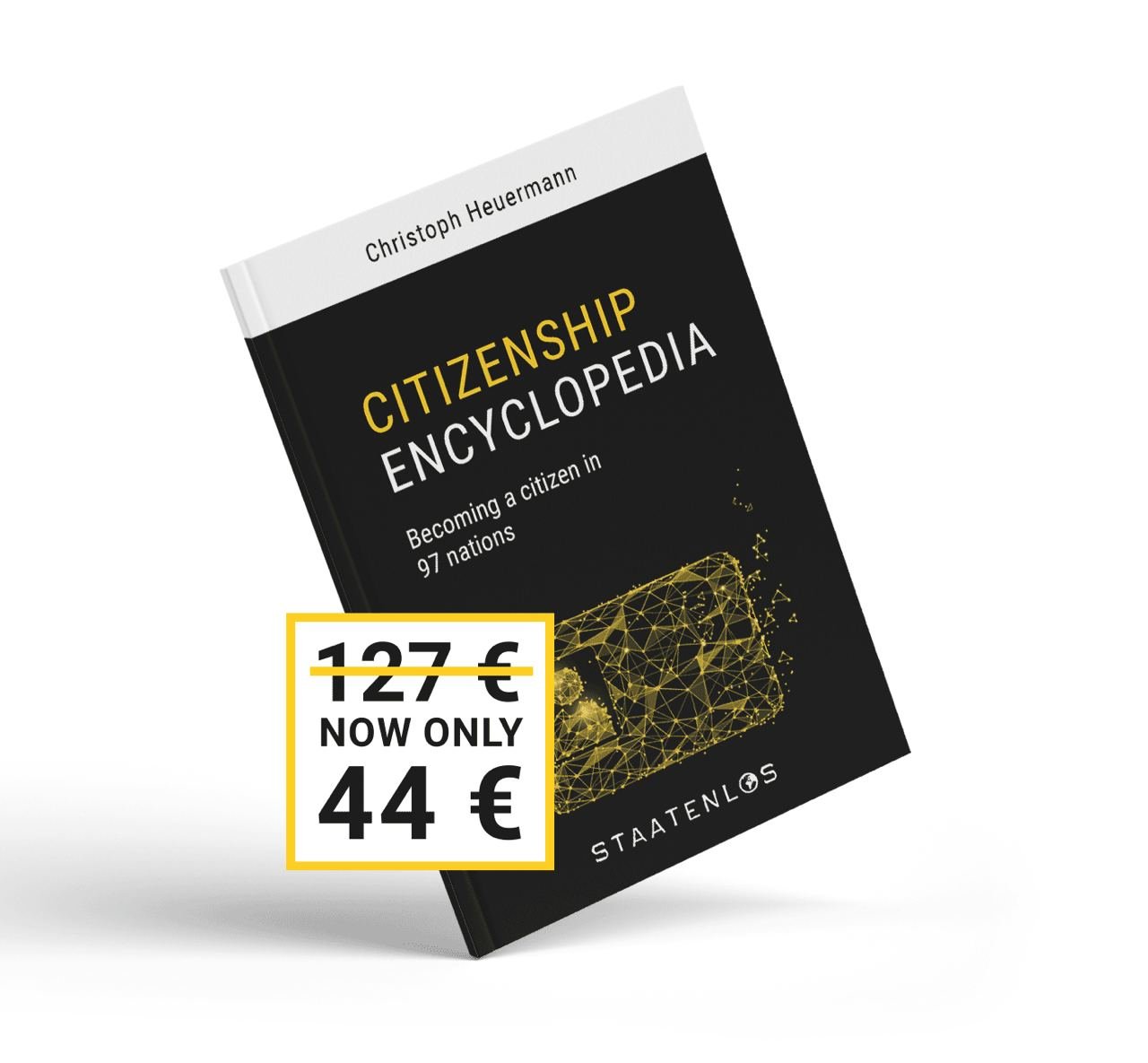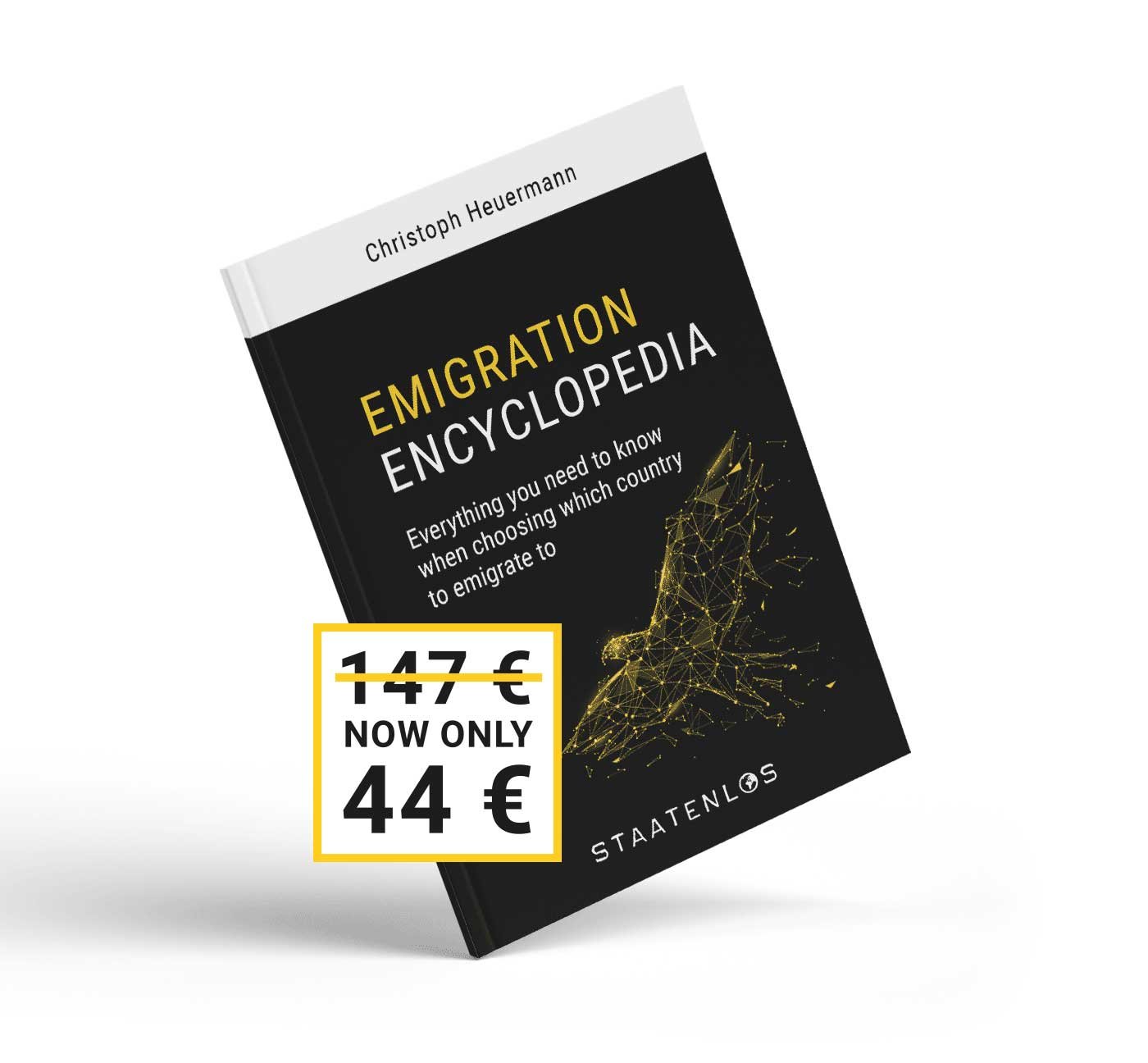In recent years the United States has emerged as a popular tax haven. Our Tax Free Today office in Fort Lauderdale, Florida, has already helped many entrepreneurs create tax-free U.S. businesses without the need to submit the company’s bookkeeping whilst also being able to enjoy excellent corporate bank accounts.
But this time we are going to focus on the arrival to the country and the residence possibilities. After all, even when having to pay taxes, the United States, for many, is an extremely attractive country to emigrate to. In addition, since Trump’s 2017 tax reform, the tax burden is relatively tolerable, at least in comparison to some other high tax countries.
It may be that, especially under the Trump administration, we picture the United States as a fortress that does not allow immigrants to enter. However, there are still different possibilities to stay there for a long period of time or even get a residence permit.
In today’s article, our guest collaborator Matthias Will, from Lifestyle-Solutions, presents an overview of all these possibilities. Matthias is a very appreciated member and is our collaborating partner for everything related to emigration in the United States.
An introduction to the U.S. visa system
The North American visa system is one of the most complex but at the same time one of the best organised in the world.
Being a classic immigration country, the United States has developed effective ways to restrict unwanted immigration, without excluding talent and income.
But the U.S. is the only country (together with Eritrea) that charges national income tax from both its nationals and those who have permanent residence permits (Green Card), regardless of where they have established their residence. This is the option that must be avoided at all costs if you are, or want to be, a perpetual tourist and want to live optimising your taxes as much as possible. It is possible that some typical emigrant will make that sacrifice in exchange for being able to live permanently in the U.S., since the country is interesting, both from the landscape and infrastructure point of view as well as from the business opportunities it offers.
While U.S. citizens can take advantage of the Foreign Earned Income Exclusion if they stay in the country for a short period during the year (less than 35 days) being able to earn $100,000 abroad without paying taxes in the U.S., Green Card holders (lawful permanent resident – LPR) cannot. Although, the U.S. tax legislation does not differentiate between citizens and LPR, in reality, from the immigration law point of view, the latter must have their focal point in the U.S. to not lose their status, which is not realistic if you spend less than 35 days of the year in the country.
But let’s take a look at the most important possibilities for travelling and emigrating.
For typical visits, whether on a tourist or business trip, there are 38 countries that have the so-called Visa Waiver Program (VWP).
This programme allows citizens from these countries to travel to the U.S. without needing to apply for a visa for a maximum period of 90 days each time. However, with the VWP programme you are not allowed to work or look for a job in the United States. In addition to tourist stays, a family visit or a trip for medical treatments, attendance at fairs, conventions and business meetings are allowed, as well as acting as a speaker at certain types of events.
Although under the VWP programme the entrepreneur, regardless of their place of residence, can work for their company online (a legal loophole), for example, by replying to emails or talking on the phone but the services should not be aimed at the local U.S. market.
Since there is no official jurisprudence on how often you can consecutively travel with the VWP, a general rule would be that you have to stay out of the country for as long as you have been in the U.S. If, for example, you spent 2 months there, you would have to spend 2 months elsewhere.
You should also consider that a visit to Mexico, Canada or various Caribbean countries does not stop the VWP counter. However, after travelling to these countries it is possible to return to the U.S. and take advantage of the rest of the visa days. The counter is only put back to 90 days when you leave the continent. This is to avoid the well-known visa-run.
The VWP is often confused with the ESTA, which is not an independent visa, but only a prior authorisation under the VWP to enter by air and sea. To enter by land from Mexico or Canada via the VWP an ESTA is not required (however Canada’s equivalent of an ESTA, an eTA is usually needed).
To date, the following countries are authorised for the VWP: Andorra, Australia, Belgium, Brunei, Chile, Denmark, Germany, Estonia, Finland, France, Greece, Great Britain, Ireland, Iceland, Italy, Japan, Latvia, Liechtenstein, Lithuania, Luxembourg, Malta, Monaco, New Zealand, Holland, Norway, Austria, Portugal, San Marino, Sweden, Switzerland, Slovak Republic, Slovenia, Singapore, Spain, South Korea, Taiwan, Czech Republic, Hungary.
However, citizens from these countries will be excluded if they travelled to any of the following countries after the 1st March 2011: North Korea, Iran, Iraq, Yemen, Libya, Somalia, Syria or Sudan, as well as people who have recently been convicted of a crime.
These people, like citizens of all other countries, must apply, instead of the VWP, for a B1 or B2 visa to be able to visit the United States as tourists or on business.
Whilst the B1 visa is issued for business visits, the B2 visa serves tourism purposes. Occassionally it is issued as a combined B1/2 visa and is valid – depending on the nationality of the applicant and the motivation of the consulate – for between one and ten years, allowing stays of up to 180 days in a row in the United States.
The golden rule that we must be outside of the country for at least the same period that we have stayed in the country also applies here, both to show a link with another country, and to avoid the suspicion of immigration.
In theory it is also possible (legal loophole) to work for your business online with a B1 visa. Here, travel bloggers and those who manage websites on current topics and news should pay special attention, since they usually need a journalist visa (I). When travelling to the country with a false or incorrect visa, you are normally penalised with forbidden entry into the country for several years.
With the B2 visa, you have to pay attention that, for family visits, you are not travelling with the objective to look after children, as this would fall within the Au-Pair category (J). Here there is also a risk of banishment or forbidden entry into the country.
A B1 or B2 visa should only be requested if it is no longer possible to use a VWP, since a denied visa automatically leads to programme exclusion. If a B1/B2 visa is requested and rejected, the option to travel through the VWP is eliminated and all subsequent visa applications are hindered.
Along with these two rather temporary visas, are a large number of visas that can be divided into the categories immigration visa and non-immigration visa.
Currently, among others, the most interesting non-immigration visas are:
- Intra-company transferee (L)
- International cultural exchange visitor (Q)
- Speciality occupations in fields requiring high specialised knowledge (H-1B)
- Student (F or M)
- Temporary agricultural worker (H-2A)
- Temporary worker performing other services (H-2B)
- Training in a programme not primarily for employment (H-3)
- Treaty trader/treaty investor (E)
- Nonimmigrant visa for spouse and children of an LPR (V)
- Australian professional speciality (E-3)
- Religious worker (R)
- Media, journalist (I)
- Foreign national with extraordinary ability (O)
- Performing athlete, artist, entertainer (P)
- Crewmember (D)
- Au Pair or exchange visitor (J)
On the other hand, among the immigration visas there are :
- Spouse of a U.S. Citizen (IRI /CRI)
- Fiancé(e) to marry U.S. Citizen (K-1)
- Certain family members of U.S. Citizens (F1,F3,F4,IR2,IR5,CR2)
- Certain family members of an LPR (F2A, F2B)
- Work immigration (EB1–EB4)
- Investor visa (EB5)
- Religious workers (SD,SR)
- Diversity Visa Lottery (Green Cards) (DV)
- Returning resident (SB)
We will now look at the options highlighted in bold, which are the most interesting variants, both for permanent immigration and for having a stable and durable entry card to the U.S.
The picture below shows whether a Green Card or citizenship can be obtained with the corresponding visa.
Lets start with non-immigration visas, which are easier to get, but have a longer path to potential immigration (if at all possible).
Foreign nationals with extraordinary abilities (O)
Although the bar is set very high, this category can be interesting for those who have already made a name for themselves in the field of science, culture, the world of business or sports, or have a much appreciated talent for acting. It is the “business” field that offers the greatest margin, and if you can demonstrate that you have an extraordinary capacity in their market or their niche, you can travel with this visa to develop your skills in the United States.
As a general rule, the O visa is issued for up to three years and can then be extended for another three years for as many times as desired, as long as the applicant’s capabilities are still extraordinary.
The O visa is called a Dual Intent Visa, which means that in the third year it is possible to apply for a Green Card, although this is not necessary. You can stay for several years with the O status.
Media or journalist representatives (I)
Especially in the Internet era, it is becoming easier to be a journalist or to publish content in the media. With the I visa there is the possibility of travelling at any time to report or gather information and work in the country as a journalist. Here are some limitations but, they are quite easy to avoid.
The person must:
- be hired by a foreign media company (the perfect thing would be to hire yourself in your own company or in a partners) or
- be hired by a foreign company while having a press identity card from a known organisation
Reporters must:
- be involved in news or documentaries (not entertainment) and
- be funded from abroad and
- only be available to the public outside the U.S (for example, via Geoblocking, language barrier)
Even a blog about the U.S. managed by a foreign company which you hire yourself can be enough to get this type of visa, as long as you can show there are enough funds available.
The I visa can be extended as many times as you want, provided that the necessary conditions still exist, but it does not lead to a Green Card, and the work permit is limited to journalistic activity (and cannot be combined, for example, with the B1 permit).
Religious worker (R)
The R visa is a somewhat more unusual variant. It is not widely used, but it offers the opportunity to practice your own religion in the U.S. with total freedom (and also earn money with it).
The U.S. constitution and jurisprudence not only grants freedom to religious communities – usually tax exemptions for religious activities are not included – but they allow them to conduct other businesses (normal business activities) as long as it does not constitute to the core of the community. As a general rule, at least two thirds of the income must come from religious activities, but the other third can come from wherever.
Foreigners can also create a religious community. Firstly there is also the possibility, in the long term, to establish the community in order to attract the odd local representative and then later, move to the U.S. with the R visa.
The R visa is issued for 5 years. After the 5 years, you must spend at least a year outside of the U.S. (you also cannot travel to the U.S. with another visa), then you can return for another five years.
Take note, after working for two years in the U.S., the religious organisation can act as a sponsor for the Green Card, if it wishes to do so.
Intra-company transferee (L)
The L visa opens the possibility of expanding the business to the U.S.
For this, the first important aspect is to already have a profitable and functioning business outside of the U.S. and to have worked in it for several years in a managerial position (L1) or in a specialised role (L2) and be able to show that you have received a salary from it. Here it is important to show a real employment relationship, and not that you simply did work for the company as a freelancer. In addition, the foreign company must be constituted as a capitalist company.
If this requirement is met, a company can be set up in the U.S. (preferably a U.S. Inc., where 100% of it belongs to the foreign capitalist company) and you can move yourself, as a manager or as a specialised worker to the U.S. branch office to set it up or expand it. Here it is important that the original company outside of the U.S. continues to function as normal and that the existing employees continue working and that no offices are transferred to the U.S., but the additional ones are created there.
Usually, the L visa is issued for 3 years or sometimes also for 5 years and can be renewed as many times as desired, as long as there is a foreign branch. However, like with the R visa, after 5 years, you must spend at least one year outside of the U.S. before you can return. The work permit is limited to the company it is registered to.
After staying in the country for several years, the employer can also act as a sponsor for the Green Card, although it is not necessary. Even though they are the ones who move within their own company, it is not crucial for them to act as a sponsor.
Genuine employee transfers from other companies, Usually do not have risks, since the Green Card issuance (an expensive process for the company) suppresses the link with the employer and, therefore the employee could look for another job once in possession of it..
Workers in fields requiring high specialised knowledge (H-1B)
The H-1B is the classic immigration visa for employees with specialised knowledge. However, the standard is quite high.
To be able to get this type of visa, the future employer must show that in every country they could not find a U.S. citizen or an LPR who could do the required job, either because after publishing the position several times nobody showed up or because all the candidates were rejected.
The visa is issued to work for a particular employer, however, under certain conditions, you can change employers, providing that the job is still the same. So, a programmer for Microsoft can also work as a programmer for Apple, but not as a designer for Adobe.
Usually, the visa is issued for up to 7 years, but generally it is not extended past this. So after staying for several years you may have to return to your home country.
The H-1B is also a “dual intent visa”, meaning it is also possible for the employer to manage the Green Card to keep the worker. The H-1B visa is only suitable for dependency labour relations, it cannot be Used to move to a U.S. subsidiary within your own company.
Trader or investor of a country with a special commerical treaty (E)
The United States has concluded commercial agreements with many countries (also with some that at first glance you’d think would be excluded from something like that). It is possible for citizens from some countries to get a trader (E1) or investor (E2) visa.
To get a trader visa (E1), the applicant must have citizenship in a country that has an agreement with the U.S., their company must be set up in their home country and trade must be between the U.S. and the countries with agreements.
So, an Irish citizen could, for example, do business through their Irish LTD company by exchanging good or services with the U.S., but they could not do it through the Irish LTD.
Trade between countries must be substantial and real. You cannot simply transfer money based on invented transactions. The term “substantial” is interpreted quite flexibly by the U.S. authorities and depends on the size of the original company located abroad. Naturally, a company with 10 workers will have less volume than one with 500, however, the percentage of exchanges with U.S. companies is Usually taken into account in relation to the total volume of the companies operations.
For the investor visa (E2) you need to set up a company in the U.S. and hire employees.
The same rules apply here as for the E1, so, having citizenship of a country that has an agreement with the U.S.. The investor must actively buy into the U.S. or have started the process of it.
A business plan must be presented which shows that, at least after five years, the company will be profitable. Profitable means that there will be a surplus that will cover all the salaries and the livelihood costs for all the workers (plus family). A company that only covers the applicants living costs does not qualify for the E2.
A fixed number of workers is not required, however, hiring yourself and your own family is Usually not enough (unless they are already living there legally and have a U.S. work permit).
For investments with 25 or more employees there is a fast procedure, both for the application and for the extension. With less than 25 employees, the process may take longer. The important thing is that the company is operational. You are no longer allowed to employ fictious workers who do not carry out true work for the company.
Neither the E1 nor the E2 visa offer a path to the Green Card, regardless of how long you have lived in the U.S..
Let’s now address the most direct possibilities of settling in the U.S.: the immigration visa.
Spouse of a U.S. Citizen (IRI /CRI)
As in most countries, marriage to a citizen of the country is a very easy way to get the respective nationality or, at least, a permanent residence permit. In the U.S. they do not give you a passport, but a Green Card, which during the first two years of marriage is issued for “a probationary period”. This means that, in most cases, if the marriage is annuled, the Green Card of the foreign spouse also expires.
Shortly before the end of the two-year probationary period, the spouses may jointly request that the “probationary period” is cancelled, although it is not mandatory to do so. If the foreign spouse does not do this, they will have the constant problem of relying on the U.S. spouse for the maintenance of their residence permit. Anyway, in a real marriage, this is not a problem (leaving aside the fanatical controllers). However, this may happen in convenience marriages, so this option is intentionally discouraged.
In order for the foreign spouse to get the Green Card, the U.S. spouse must act as a sponsor. This means that the American citizen accepts – for an indefinite period – all the U.S. expenses of their foreign spouse that he/she cannot afford (for example, medical treatment, fines, taxes, etc.).
In some exceptional cases, this obligation remains in effect even after a divorce. So, if you are married to a U.S. citizen or plan to be and already have a company outside of the U.S. this path is the fastest way to emigrate to the country, but also the quickest way to have to pay tax on your foreign income.
For some time now, gay marriage has been equated with heterosexual marriage provided that it is established in a country where it is legal. However, polygamy is not considered, and the U.S. citizen can only marry their first spouse (depending on the marriage date) under this programme.
Fiancé visa to get married in the U.S. (K-1)
While with the previous IR1/CR1 visas you must marry first and then you can live in the U.S., the K1 is the complete opposite. Here, the future foreign spouse must first apply for a visa from outside of the U.S., for which the U.S. spouse acts as a sponsor for. Then the foreign spouse travels to the U.S. where they have a maximum of 90 days to get married and then they are able to adapt the corresponding status of the foreign spouse.
The advantage of the K1 visa may be that – unlike with the IR1/CR1 – waiting times are Usually shorter. While this option often takes 1-2 years until the couple can actually live in the U.S., with the K1 the process is Usually faster and the foreign couple can wait in the United States until their status is updated or until their Green Card is issued.
Here it is important to mention that you are not allowed to marry for a B1/B2 visa or under the VWP if this was planned in advance or if the couple knew eachother before. Nothing opposes a spontaneous marriage with a showgirl in Las Vegas or with the lifeguard on Malibu Beach, if they are genuine marriages.
Certain family members of LPR (F2A, F2B)
If you already have an LPR among your relatives, this route can be interesting. Even if you often have to wait several years, this path is almost always successful, provided that the LPR has enough income or funds to act as a sponsor.
Investor visa (EB5)
This visa is especially recommended for businessmen who do not depend on their place of residence and who have enough income. In order to apply for this visa, an investment of at least $500,000 (in poorer regions) and $1,000,000 (for the rest) is required. However, as of November 2019 this minimum investment will increase to $900,000 and $1,800,000 respectively. This increase is due to the fact that for many years these amounts have not been updated to inflation.
If you have the necessary income, it is recommended to apply for this visa before the 21st November 2019 (get it stamped before this date at the corresponding consulate) in order to benefit from the above limits.
With the EB5 the classic path (similar to the E2), plans to set up a company in the U.S. and create a certain number of new jobs (varies according to the region). For this, it is necessary to provide the corresponding business plan, proof that there is sufficient income and documented qualification to carry out the project.
If the project is approved, the Green Card for the applicant is issued (and for direct family members if desired) in a “trial period” of two years. During this time, the project must have been launched, although not necessarily be profitable.
After five years, the Green Card holder has the possibility of applying for nationality or continuing with the Green Card. If the project ends later (regardless of whether it was sucessful or not) the residence permit remains in force.
So, if you have the necessary income and set up a company, this is a quick and guaranteed way to get a permanent residence permit.
A more modern path is for the investor to participate in projects already approved by the U.S. authorities. This way, many of the necessary jobs are created (for example, the construction of large infrastructures with more than 100 workers), and the investor, with his income, takes on part of the project and the necessary jobs for his visa, without having to intervene in the daily management of it.
However, as a Green Card holder the minimum stay in the country still applies and so does having to create your whole life there, whether as a landlord or with a completely different business model, which may not qualify for the EB5. So there is the possibility of getting a permanent residence permit through only income investment.
In many cases, if the project is successful, you can even regain the invested income, sometimes even with interest, but at a lower rate than in the current market. You could say the difference here is the margin of the project manager. If you are interested, research these projects.
Diversity Visa Lottery (Green Cards) (DV)
If you do not have the income, U.S. family members or future marriage candidates, participating in the Diversity Visa Lottery is an economic option to get the Green Card. In this lottery, the U.S. raffles between 50,000 and 55,000 visas every year, completely at random.
Although participation is free, if you do not speak English very well, it is recommended to hire a company that manages your participation. To take part, you only need a secondary education degree which equivalates to an American High School degree or two years of experience in a job that, in the authorities opinion, requires a sufficient level of specialised knowledge.
There are countries that, because they participate in disproportionately high numbers in the U.S. population, are excluded from the lottery, for example, Mexico or Great Britain. Here nationality is not taken into account, but the country of birth.
After winning the lottery, you need to present a certificate of good conduct without objection from all the countries you have lived in for more than six months, have a minimum capital of $10,000 to survive the first months in the U.S. without becoming a burden on their social system, as well as passing a medical exam (and eventually getting some vaccinations).
Since politicians have repeatedly spoken about abolishing this lottery recently, there is no guarantee that this possibility will continue in the coming years. The period to participate is always from the start of October to the start of November every year.
As a general rule, the winners are drawn in April or May of the following year, and the processing of cases is between the 1st October of that year and the 30th September of the year after that. Nobody up to that moment can travel to the U.S. with their authorised visa, or they will lose it and will have to start from the beginning.
Tax considerations for U.S. residency
In principle, the U.S. IRS (Internal Revenue Service, which became the Treasury in the U.S.) applies the “substantial presence test” to determine the type of taxation.
For U.S. citizens (and in theory also for Green Card holders, but as explained above, it is not used for them), the federal tax is abolished for the first $100,000 if less than 35 days are spent on U.S. territory, including in the air or on the sea. Then, double taxation agreements are eventually applied.
Stays of 35 days or more in the U.S. must be taxed based on world income (here double taxation agreements may also apply). Although, if there is no taxable income in the U.S., you need to submit a U.S. income statement.
Even after giving up U.S. citizenship, during the next 10 years you may have to pay taxes in the U.S.
As well as federal taxes, Federal States (and municipalities) also collect taxes. Here, not all States are follow the “first $100,000 exempt for expatriates” rule, so eventually, you may have to pay taxes in the State where you last registered before emigrating to another country. Therefore, it may be convenient to first move to a State where this exemption is recognised, before leaving the country permanently.
Green card holders, like U.S. citizens, have to pay taxes based on their world income, regardless of their place of residence. Here too, in the immigration year, double taxation agreements and special considerations are applicable. Therefore, it may be best to arrive on the 1st January to avoid complications in the tax return. This is particularly interesting if you own a U.S. corperation or an LLC. Also in this case, you can still have tax obligations in the U.S. even several years after the resignation or withdrawal of the Green Card.
There are special regulations for citizens and for Green Card holders who live in Puerto Rico, where until the end of 2019 the (Act20/22) regime allows you to pay much lower taxes if the residence or domicile of a company is there. As of 2020, Act 60 will take its place, although the majority of the tax advantages will remain intact after the modification.
For the owners of other immigration visas, the “substantial presence test” applies until the Green Card is issued, as for all non-immigration visas.
But how does the substantial presence test work?
Firstly, it is determined whether at least 31 days have been spent in the U.S. that tax year (including in the air and sea). If this is not the case, you can stop counting. You have no substantial presence in the U.S.
If you have been in the U.S. for at least 31 days, 1/3 of the days from the previous year and 1/6 of the days from the year before must be added. If this results in 183 days or more, tax liability will be in the U.S. for the income earned worldwide. If this number is not reached, you will have to pay taxes on all profits from the U.S. or through trade with the U.S.
In relation to taxation, it is very important to consider which visa is chosen and how long you plan to stay in the U.S. with it. Even a wide use of the VWP or the B1/B2 can lead to tax liability, even if it is not authorised to work in the U.S.. Tax law and immigration law are totally separate.
Immigration costs to the U.S.
While the VWP costs nothing, ESTA applications are currently €14.
To all immigration and non-immigration visas, sometimes other fees depending on the applicant’s nationality are added to the prices indicated below. Here, for reference, the expenses for German citizens are specified.
Non-immigration visa
You can get a B1/B2 visa for $160, the same as an I (journalists visa) and a J (exchange visa).
For the J visa, you eventually have to pay another $220 or $350, depending on the programme chosen.
For $190, you can get the H-1B visa (specialised workers), L (intra-company transferee), O (extraordinary ability) and R (religious issues).
For an L visa, in the first application (or in the following applications if it is rejected) an additional fee of $500 is charged to cover the costs of investigating possible fraud offences.
An E visa (trader/investor) costs $205, and if you want to bring your fiancé to the country (K1) you must pay $265.
Immigration visa
Family members who settle in the U.S. must pay $325 per person, and although participating in the Diversity Visa Lottery is free, if you win, the consulate charges $330 for processing paperwork. All other immigrants must pay $205 for a visa application.
In addition to these fees, if you get authorisation, an additional fee of $220 will have to be paid to issue and send the Green Card, otherwise, even if you can travel to the country up until the visa’s expiry date (generally 6 months), there will be problems when proving status.
Along with these fees from the consulate or the United States Citizenship and Immigration Service (USCIS), other costs are often added for opinions, evaluations of business plans, medical examinations, vaccinations, evaluations of suitability of the sponsors etc.; but listing each one would exceed the length of this guide.
In any case, below we show an overview of the main types of visas.
L1: between $1,520 and $7,430
E1/2: approx. $500- $1,000 (more funds available, usually more than $100,000)
Diversity Visa Lottery: approx. $300 to $10,000 of available funds.
H-1B: $1,600 – $7,400
EB5: approx. $50,000 – $75,000
This does not include expenses for support service, for example, through U.S. or an immigration lawyer, which is always recommended for anything that is more complicated than the Green Card lottery or a tourist visa, as a large number of visas are rejected for simple errors, unfortunate business plans or during interviews, or simply for not meeting deadlines.
Since each case must be individually assessed, a price list cannot be given. In any case, the following estimates on what to calculate are approximate guides. All prices are per person.
- Family reunification/ Marriage with visa immediately available: approx. $7,500
- Family reunification / Marriage with a previous application rejected or accusation of fraud (complicated cases): approx. $10,000 – $15,000
- Family reunification / Marriage if the visa is not available (waiting list): approx. $3,500 – $4,500
- Request for cancellation of the “provisional” Green Card for spouses (with a joint request): approx. $4,000
- Request for cancellation of the “provisional” Green Card for spouses (with individual request): approx. $9,000
- Application for the cancellation of the “provisional” Green Card for children: approx. $2,500
- E1/2: approx. $15,000
- L1/2: approx. $15,000
- H-1B: approx. $6,000 (without existing employer share)
- K1: approx. $3,500 (K3 for children approx. $2,000)
- EB5: approx. $15,000-$25,000
- O: approx. $15,000
- R: approx. $10,000
- Preparation of the forms and the interviews for the Diversity Visa Lottery: approx. $500
- Nationality: approx. $4,000 (complex cases approx. $7,500)
- I: approx. $2,500
Concluding the article on U.S. immigration
This article (despite being more than 6 thousand words) can only offer a first approximation to the depths of the U.S. visa regime and its tax system, an area that is constantly subject to change.
Before starting, it is best to draw up a precise plan – either individually or with external help – on what you want to achieve, and find out which application option is the most appropriate for that particular case, given that in many instances, being rejected may have a negative effect on subsequent attempts. In fact, this is something that is asked in all the applications and, eventually, the old files are checked to see if a person wants to get a visa at all costs, something that in the worst case can even motivate them to refuse a tourist visa.
If you want help applying for your U.S. visa, write to us.
Did you like our blog article?
Support us by purchasing our products and services. Or build up a passive income by recommending us as an affiliate! And don’t forget to check out Christoph’s travel blog christoph.today!
Secret Knowledge Video Course
Learn Everything that You Need to Know for a Life as a Perpetual Traveler
Watch Video CourseEncyclopedia Collection
Acquire Expansive Knowledge about Banking, Companies, Citizenships, and Emigration.
Order eBooks







